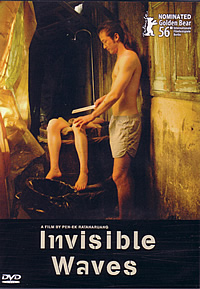SYNOPSIS:
After inadvertently killing his girlfriend, a man (Asano)
flees Macau for Thailand in an attempt to cope with his guilt
and avoid possible arrest. But the relocation doesn't prevent
his problems from following him, as his new friends could
be potential enemies. The film explores why people kill and
how they live with and resolve their guilt. It attempts to
show that a person who hires and a person who kills are as
much a victim as the person he kills. Everyone is a victim
and everyone is full of guilt.
MOVIE
REVIEW
There
are many things in life which do not make sense. Art movies,
for example, are one of them. Some may argue that this genre
of movies are made for the more intellectual, but whether
the director is just enjoying self-indulgence while making
his film, we as audiences may never know. For
those who are familiar with Pen-Ek Ratanaruang’s works,
you would know how his latest film is so very different from
his first few movies. To initiate the uninitiated, this Thai
director’s first three movies Fun Bar Karaoke (1997),
Ruang Talok 69 (1999) and Mongrak Transistor (2001) are fun
and enjoyable showcases of the Thai lifestyle.
Then came
2003’s Last Life in the Universe. It dealt with depressing
issues like suicide and the meaning of life. Now we have this
pan-Asian collaboration that is Invisible Waves, which we
must say, has reached another level of bleakness which may
be a tad too gloomy for some to handle.
The story
is seemingly simple. A man (Tadanobu Asano) escapes from Macau
for Thailand after accidentally killing his girlfriend. Obviously
this man wants to avoid being caught, but deep inside him,
he has to deal with some heavy notions like guilt, remorse,
and repentance. Unfortunately for him, things do not get any
better in Thailand.
How deep
and undecipherable can a film with such a storyline be? Never
underestimate the power of art movies, we’d advise you.
If the themes dealt with in this 115-minute isn’t drab
and unhappy enough for you, the style of the movie will get
to you, one way or another.
The film
moves so slowly and indulgently, it will make you notice every
corner of every frame: whether that is a good thing, we will
not pass judgment. But one thing is for sure, the visuals
are beautiful to look at, thanks to renowned director of photography
Christopher Doyle.
Then
there is this thing about these art movies - what exactly
are they getting at? There are many bewilderedly odd scenes
which will make you ponder what exactly is happening. There
must be something deeper than what is presented on screen,
you’d think. Then when the frequency of these scenes
gets the better of you, you’d find yourself laughing
at them.
The cast
delivers a fine performance without looking ridiculously silly.
Actors to look out for include Eric Tsang as a philosophy-spouting
monk and Maria Cordero as a motherly caretaker. In fact, everyone
is so serious and intense in their roles that it got us all
heavy-hearted and sullen at certain points in the movie.
For
those who are patient and have been exposed to art films like
this, the message behind this movie still has the power to
make you realize what a bleak and sad world we live in. If
that is what the director is trying to convey with this film,
then we are proud to proclaim that we are indeed intelligent
audiences who can appreciate art films. For that, we’d
award this movie with an extra half a star.
AUDIO/VISUAL:
The visual transfer preserves the lush colours which are signatory
of Christopher Doyle, and there is a choice of either Dolby
Digital 2.0 or 5.1.
SPECIAL FEATURES
No
extra features are included in this Code 3 DVD, though we
thought it’d be nice to have a commentary by the director
to explain to clueless viewers what he is exactly getting
at.
MOVIE
RATING:
   
OVERALL
DVD RATING :

Review
by John Li
|

